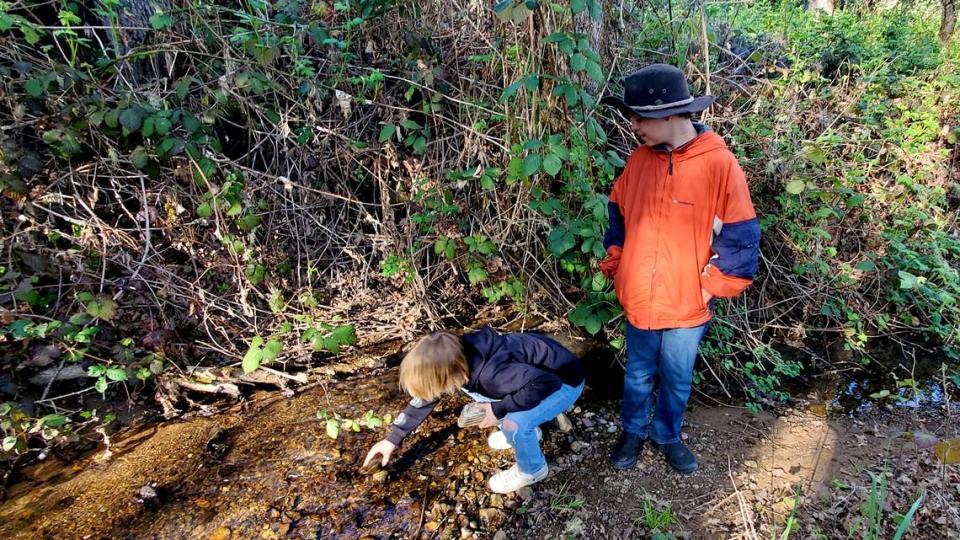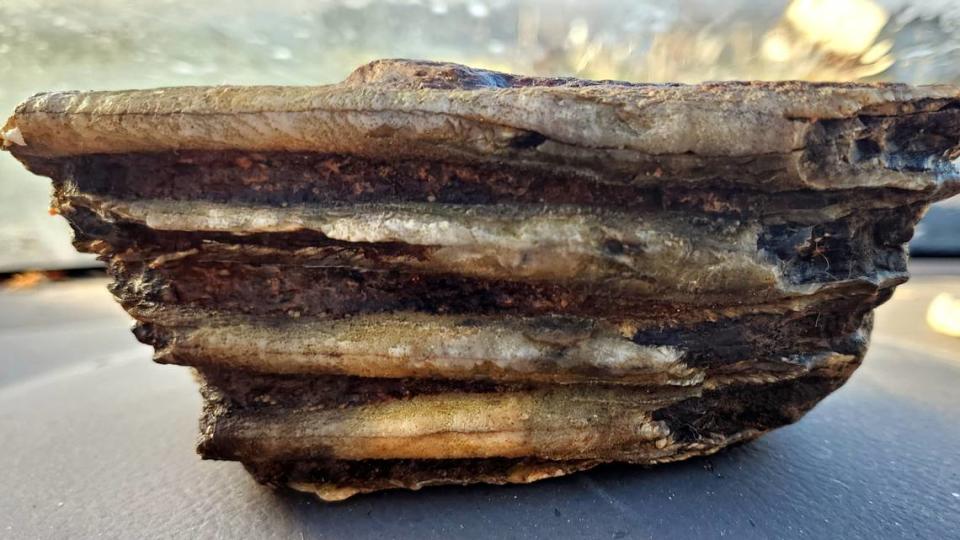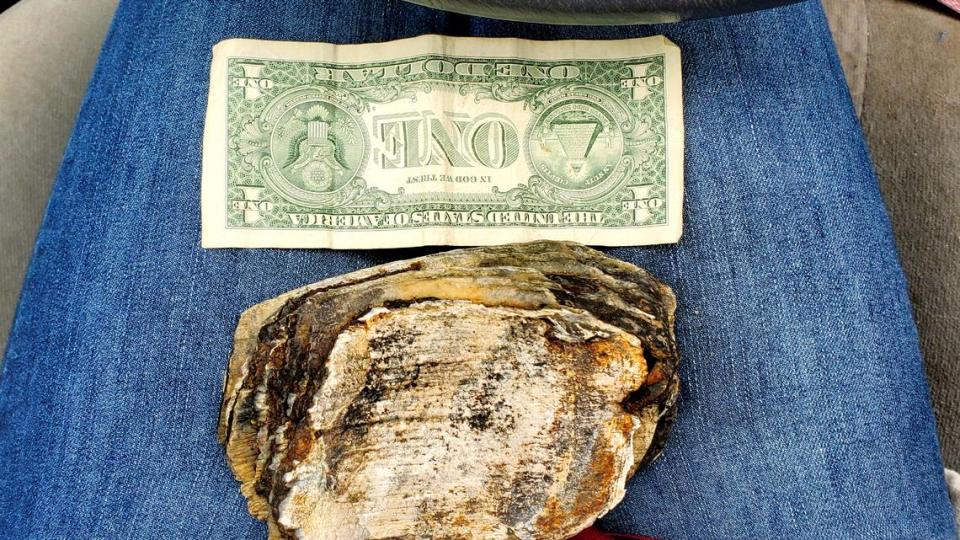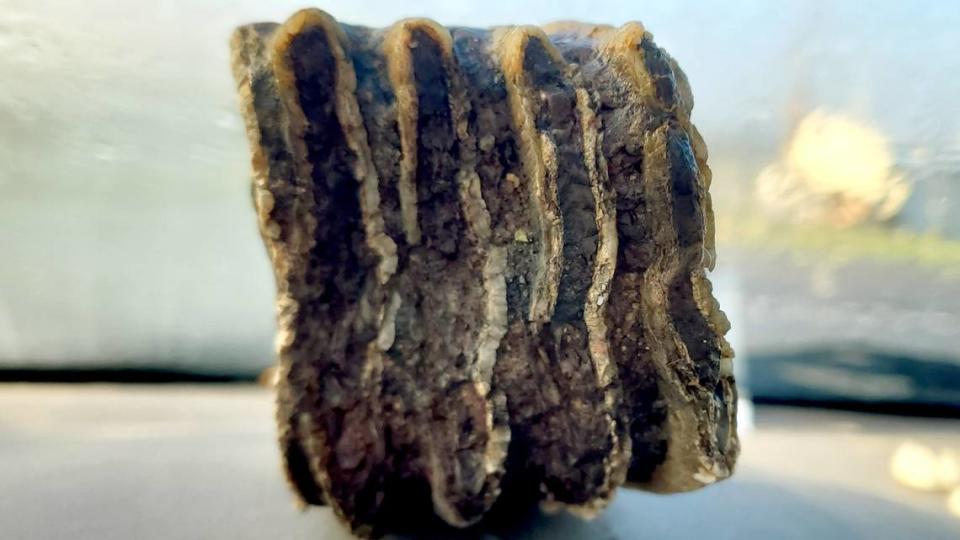9-year-old thought he found a ‘plastic container.’ It was actually a mammoth tooth
Every weekday, 9-year-old Jeremiah Longbrake hitches a ride on a bus from his elementary school to his grandmother’s rural Oregon home.
On a recent April day after arriving at the Winston home, Jeremiah told McClatchy News that he “went outside to get rid of excess energy.”
First, he jumped on the trampoline, he said. Next, he swung on a swing, jumped off and got it stuck in a tree after throwing it.
With nothing left to do, he decided to check out the creek that runs through his grandmother’s 4-acre backyard, which includes a wooded forest.
Stick in hand, Jeremiah was searching the creek when something caught his eye.

“I thought there was like this plastic container floating in the creek,” Jeremiah said. “And then I picked it up, went back inside the house and I got Mom”
His mom, Megan Johnson, had just gotten back from work when Jeremiah rushed in the house to show her his find, Johnson told McClatchy News.
As a self-proclaimed rock hound, something told her it was a bit more than a container.
She said she posted images of the find on Facebook hoping her friends, many of whom are also rock hounds, would have some answers.

“Like half a day later, I had a ton of comments,” Johnson said. “And a lot of them were saying, ‘Oh! That looks like a tooth.’ ‘No. That looks like a mammoth tooth.’”
Stunned, Johnson said she decided to reach out for an expert opinion.
After a handful of referrals, calls and emails, Johnson landed in the inbox of Patrick O’Grady, an archaeologist with the Museum of Natural and Cultural History at the University of Oregon.

O’Grady told McClatchy News he regularly gets inquiries about others’ finds, and often they don’t amount to much.
Jeremiah’s discovery, however, was different.
“This was quite a find,” O’Grady said. “Jeremiah found something that I dreamed of finding when I was a kid.”
Using Johnson’s photos, O’Grady said, he identified the specimen as a mammoth tooth fragment based on its distinct features, including its shape and “rows of enamel plates.”

“I felt pretty, pretty excited,” Jeremiah said about learning the significance of his find.
Jeremiah said at first, none of his school friends believed him about his find.
So, he decided to bring it to school to show them, along with an article published in The News-Review about his discovery.
“Then, they believed me,” Jeremiah said.
Johnson, who trekked the same creek as a child and never made quite such a discovery, said she was thrilled about Jeremiah’s find.
“He’s kind of got an eye for stuff that’s interesting and unique,” Johnson said. “I’m not surprised that he found it.”
Without testing the specimen and getting a radiocarbon date, O’Grady said the most he can say about it is that it is likely from a Columbian Mammoth, which went extinct about 10,000 years ago.

O’Grady said the tooth likely stumbled down the stream channel over the course of a couple flood seasons.
“He (Jeremiah) caught it at the perfect time,” O’Grady said. “Otherwise, it would have disappeared and probably never been seen again after this summer.”
Jeremiah said he plans to give a dime-sized sample of the tooth fragment to the Museum of Natural and Cultural History at the University of Oregon for testing.
“We want to add one more data point on the map,” O’Grady said. “Every little piece adds something larger to the larger picture of our understanding of animals in Oregon.”
As for the rest of the tooth fragment, Jeremiah said he wants to hold on to it, for now.
“Once I get a little older, I’ll probably donate it,” Jeremiah said.
Winston is about 80 miles south of Eugene.
‘Once in a lifetime find,’ Boy finds massive, extinct shark tooth on SC vacation. Check it out
Dog finds 6 million-year-old mastodon bone at Hanford. Where to go see it
Hiker stumbles on dinosaur fossil in Colorado. Excavators find one more


